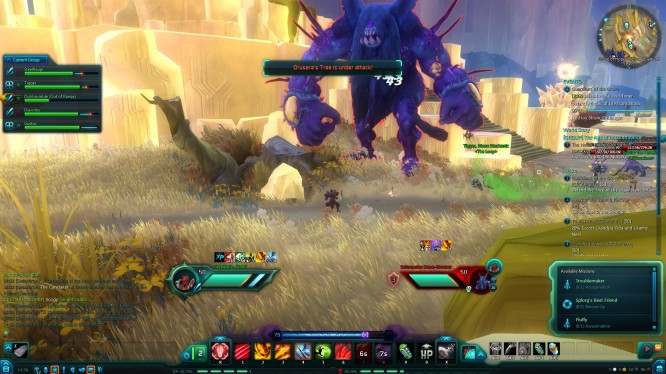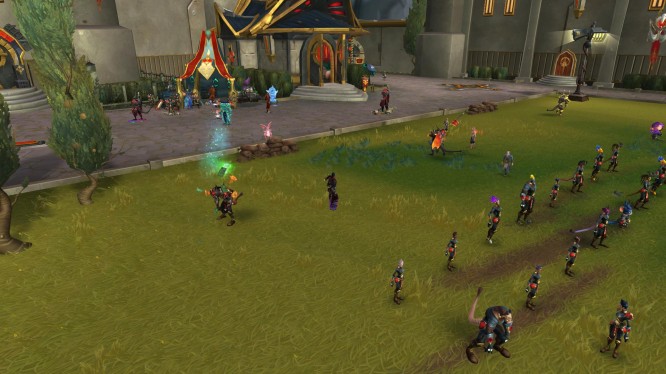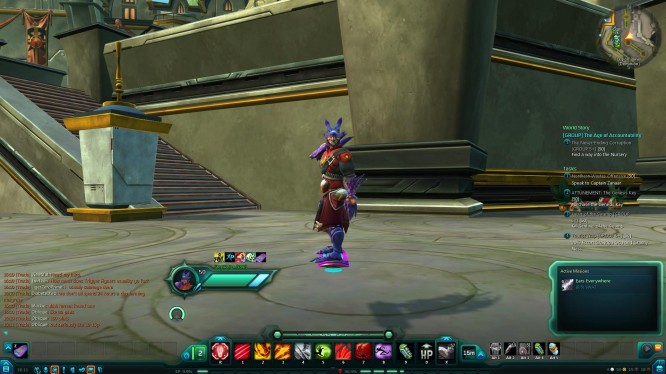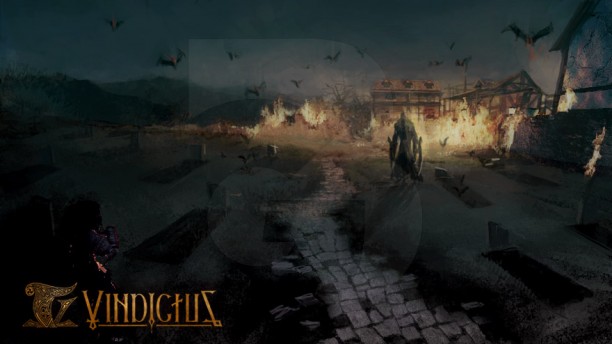

When an MMORPG heads into the realm of free-to-play it is often a bittersweet experience. First, it allows a massive influx, at least temporarily, of new, fresh players who wouldn’t have had the chance to experience the game otherwise, but it can also alienate those who currently enjoy the subscription model. Secondly, there’s always the possibility that it will cheapen the playing experience and is often challenging to implement without creating a pay-to-win environment. Albeit some games have successfully transitioned to free-to-play. and are more successful for it, but many other games have also taken advantage of loyal customers.
Now there hasn’t even been a hint about WildStar officially removing its subscription or even changing its payment model, however, there has been a widespread movement towards this system in the last few years. Many games have tried to compete with the mammoth that is World of Warcraft, but subscriptions generally plummeted after launch. Switching over to a freemium model allows games to continue to survive and substantially add to their player count, even if it can be inaccurately inflated with botters, spammers, and generally inactive accounts.
Why am I discussing something that hasn’t even been officially announced yet, or even hinted at by the production team? Unfortunately WildStar isn’t doing so great. This fact is pretty obvious to anyone actually playing the game, considering all but a handful of servers have been drying up. It feels like the last few active servers are refugee camps for only the strongest and most dedicated WildStar players. However, without actual subscription numbers being released by Carbine it’s almost impossible to tell where exactly WildStar falls now in comparison to its launch, or even to other games.

Replaying the same content is definitely getting stale.
Except that it’s not entirely impossible. According to the blog The Nosy Gamer, the player data for the top 12 MMORPGs is compiled in a weekly blog called the Digital Dozen. How can a simple blog obtain data that isn’t being released to the public? Well, the data is obtained through the XFire player database and then the total number of hours that each game is played is divided by the total number of gaming hours for that week to give each game an overall score. While this obviously isn’t a 100 percent accurate representation of the entire gaming population, since it only includes information from a specific community, it does at least allow us to analyze patterns in particular games. It’s not likely that XFire users deviate too far from the norm, so this gives us a fairly stable player base to derive information from.
It’s not going to surprise anyone, but World of Warcraft has been on the top for quite a long time. Again, it’s probably not surprising that on WildStar’s early access weekend it took the number two spot on the charts. Pretty much every major game at least draws some hype during launch, but WildStar actually had the second most successful launch, comparatively speaking, of any recent game only to be beaten by Guild Wars 2. In its opening week WildStar had an impressive 20 percent of the gaming hours played and even stole a few players from World of Warcraft, who dropped to 33.7 percent after hovering around 37 percent for several weeks.
After an initial very successful few weeks, WildStar has entered a downward spiral that it hasn’t seemed to be able to overcome. The number of hours that players have been in WildStar has literally declined every single week since launch. According to the data from 2014, there isn’t a single other game that’s lost players for every consecutive week. In fact, play time in WildStar has dropped so low that it hasn’t even been on the Digital Dozen since August 25th. Numbers for WildStar are currently on par with The Elder Scrolls Online, Rift and MapleStory, which is pretty bad to say the least .
Now it’s not fair to exclusively single out WildStar for poor performance because numbers have been respectively dropping across the board. That is, of course, with the exception of World of Warcraft, which has seen an increase in players since around June. There are a number of factors that could cause this. First, it’s entirely possible that this player sample is skewed and those that went to play WildStar at launch were simply World of Wardcraft fans that wanted to test out something new. This would explain why one has been declining while the inverse has been happening for the other, however, WildStar has been declining much faster than World of Warcraft has been gaining players, so this can’t be the entire story.

Stand up and voice your opinion!
What’s more likely is that small groups of players from a variety of games left to play WildStar and they decided it wasn’t the game for them. This theory is also supported by the data as a good amount of games saw a decrease in players during WildStar’s initial weeks and then recovered. The recent rise in World of Warcraft’s popularity is more likely due to the Warlords of Draenor expansion releasing next month. WildStar was down to about 300 game hours last week, and World of Warcraft saw nearly 6,800.
Things might be looking quite bad for WildStar, but there is still a chance to revive the game. While I generally don’t advocate a game going free-to-play, unless absolutely necessary, it really doesn’t appear that the Carbine developers have enough up their sleeves to keep players around simply through content production. There have been a number of games that have greatly benefited from going free-to-play and some are probably only still around because of it. Tera: Rising, for example, was struggling to be relevant in late 2012, but the announcement that it was removing its subscription model boosted its registered player count to a record 1.4 million by March, 2013.
Another example of a game that at least saw limited success by going free-to-play was Aion. Weekly play hours for Aion almost tripled after its Truly Free launch in April, 2012, and then slowly tapered off. While the results for Aion weren’t exactly lasting, the game held relatively decent numbers until the fourth quarter of 2013, and it is currently beating WildStar in weekly hours played among the XFire community. It’s likely that Aion wouldn’t be around anymore if it hadn’t gone free-to-play, as NCSoft isn’t known for keeping unprofitable games around.
Unfortunately changing a business model doesn’t necessarily ensure a game is going to thrive, or even survive for that matter. Star Wars: The Old Republic, one of the most expensive MMORPGs to ever be created, saw huge success on launch but subscriptions fell approximately 500,000 the next month. As numbers dwindle, EA decided that going free-to-play might save the game, but the temporary boost to numbers seemed to recoil within the next six months. The player base was said to be hovering around 1 million in August, 2014, but play time has been steadily decreasing and free-to-play numbers aren’t exactly equivalent to their subscription-based counterparts.
Switching to a new payment model is often easier said than done, and WildStar would be no exception. Currently there doesn’t seem to be enough content that Carbine could sell for a profit. Of course there could be special housing items, experience boosts, and costumes, but those types of products are unlikely to be attractive to current players. The fact is that there’s already barely enough content in the game as it is, but trying to sell what’s already there would be a grievous oversight.

Selling costumes is one thing…gear on the other hand is another.
Devoting time to creating premium content would also likely cause a backlash from the community because as focus needs to be kept on the core game. One of the major problems with the game is that hardcore players only login to raid anymore and casual content has been dried up for months. Player versus player is usually used to absorb time during these transition periods, but there are still major issues with the PvP and it’s still relatively unrewarding.
Additionally, there would be issues removing C.R.E.D.D. from the game, which acts as game time that can be purchased from other players. There are multiple other games that use an in-game system of subscription trading such as EVE Online and Tera Online before it went free-to-play. The benefit of this service is that it can stabilize an economy while still providing the developers with the same amount of funding as if players were purchasing actual subscription from them. Removing this system could cause issues with the economy and a transition period would be needed to compensate, or refund, players that have an active C.R.E.D.D. Even worse is that it could cause an unintended influx of gold sellers.
From a numbers perspective, it looks like WildStar is between a rock and a hard place. Despite what their public relations team might be saying, it looks like player subscriptions have been hemorrhaging from WildStar since launch according to both in-game observations and the data. Whether going free-to-play, or not, is going to save the game is definitely still up for debate, however, players’ responses to a decision, or indecision, from Carbine will definitely speak volumes.




 The Simpsons – Tapped Out: Guide for Thanksgiving Event 2015
The Simpsons – Tapped Out: Guide for Thanksgiving Event 2015 Mobile: The Future of Online Gaming .
Mobile: The Future of Online Gaming . Age of Wushu : Shaolin, Royal or Beggar – The Schools in Overview
Age of Wushu : Shaolin, Royal or Beggar – The Schools in Overview Dragon Nest: Questing Made Easy
Dragon Nest: Questing Made Easy MMOs: Give Me The Money! .
MMOs: Give Me The Money! .